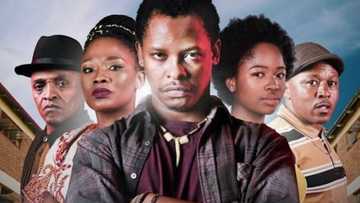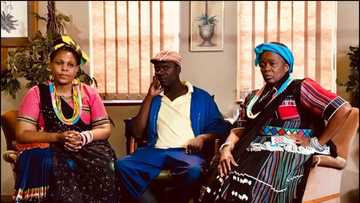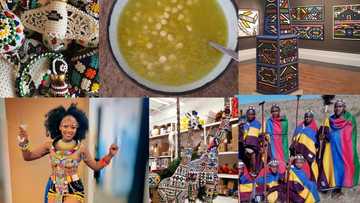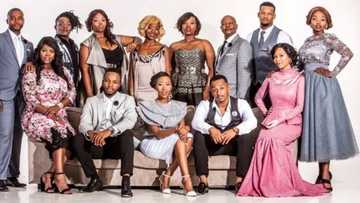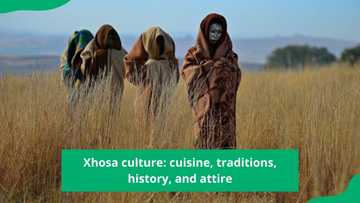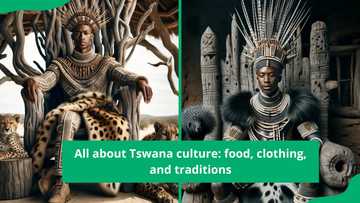Heritage Day: A look at the rich and beautiful cultures in Mzansi
South Africa isn’t called the Rainbow Nation for nothing. Not only is SA one of the countries with the most inspiring freedom stories, but it is also one of the most diverse nations on the planet.
PAY ATTENTION: Click “See First” under the “Following” tab to see Briefly News on your News Feed!
On 24 September, 2021, South Africans celebrate Heritage Day. Mzansi’s culture is made up of a collection of cultures that are predominant in different regions.
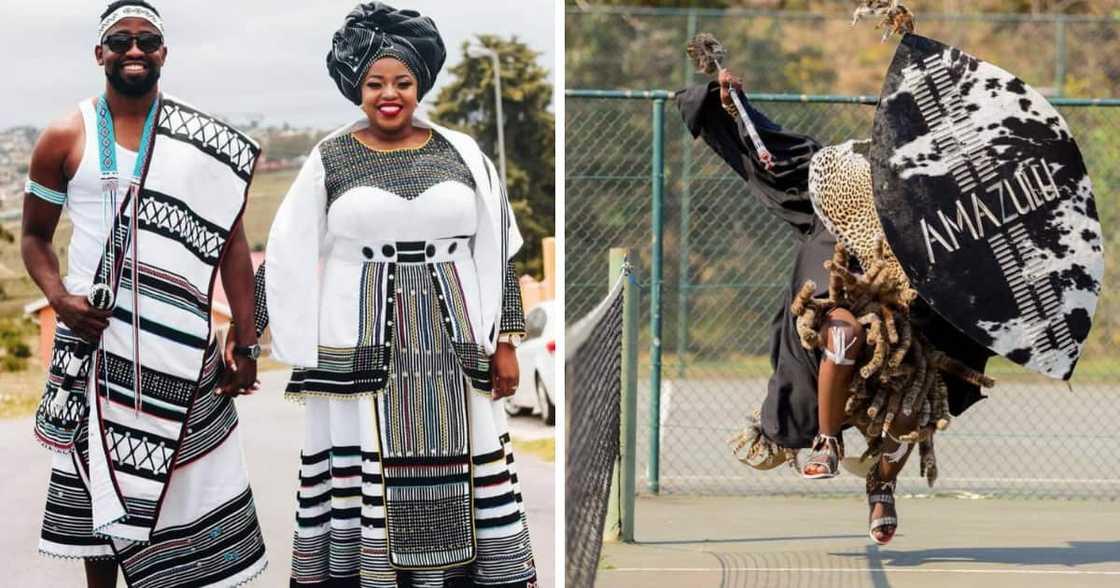
Source: Twitter
A beautiful blend that gives SA its unique identity on the globe
With 11 different languages and several tradition-rich cultures, Briefly News took a look at our people’s heritages on this special holiday.
South Africa forms part of the Bantu groups.
PAY ATTENTION: Never miss breaking news – join Briefly News' Telegram channel!
The government defined Bantu as:
“It named a major linguistic group in Africa, and more locally, to identify the sizeable group of Nguni languages spoken by many Africans in sub-Saharan Africa, and it identifies those Bantu-speakers who spoke that group of closely related languages which linguists divide into four categories: Nguni, Sotho-Tswana, Venda and Tsonga-speakers.”
The Nguni group
As stated above, SA does not have a single culture, it has several cultures that collectively make up the country.
The Nguni group form part of these cultures and they are predominately area based. The cultures that are Nguni are Ndebele, Swazi, Xhosa and Zulu, which are in the present-day provinces of Eastern Cape, Gauteng, KwaZulu-Natal, Limpopo and Mpumalanga.
Ndebele
The Ndebele community traces its origins to the broader Bantu community. Mafana was the community’s first known chief. He was succeeded by Mhlanga who had a son named Musi. In the 1600s, Musi moved to the hills of Gauteng where the community settled.
After Musi died, his two sons fought for the chief’s seat. The community split into two groups after the fight. The Manala group remained in the north while the Ndzundza moved to the east and south. Today, the community makes about 2% of the total population.
Swazi
The Swazi refer to a tribe, nation, or an ethnic group that speaks the ‘siSwati’ language. Most of the siSwati speakers reside in South Africa and Mozambique. In South Africa, the Swazi can be found in Swaziland, which is a small landlocked country with an estimate of 17, 368 square kilometers.
The Swati tribe acquired its name after the prominent king Mswati II, who acquired his throne in 1839. The lineage of this ethnic group can also be traced back to the era of chief Dlamini, which up to date is the royal clan title. Roughly three-quarters of these Dlamini clan names comprise of the Nguni tribe, and the other quarter belonging to the Sotho and the Tsonga. With time, these clans have intermarried amongst themselves.
Zulu
The Zulu people are predominately found in KwaZulu-Natal today. Briefly News previously reported "People of Heavens" (amaZulu) is the term that the Zulu tribe use to refer to themselves.
Their home KwaZulu is the 'Place of Heaven'. They are the largest ethnic group of South Africa, with an estimated 10 million in number in KwaZulu-Natal.
The Zulu kingdom emerged in the 19th century. It had different clans with different Zulu clan names. It was under the reign of Shaka Zulu, who took over as king after the death of his father, Senzangakhona.
Under his reign from 1816 until 1828, he initiated many militaries, social, cultural and political reforms, forming a well-organized and centralized state. Also, under him, an army of 50,000 emerged and defeated other clans. He created many military tactics to defeat the enemy. He created the 'Assegai' (short, sizeable bladed stabbing spear) and the lethal means to utilize the weapon. He used no cowhide sandals since he considered them less comfortable when walking. He was a great and brilliant leader, and his military skills were unmatched.
The death of his mother dealt a significant blow to him, making him lose his mind and in his grief, killing many of his subjects. Seeing him as a threat to the clan, his half-brothers, Dingaan and Mhlangana, assassinated him. Dingaan then took over the throne.
In 1887, the British annexed Zululand. In 1980, the apartheid government moved the Zulu to KwaZulu Bantustan intended as their semi-independent homeland. The current name of the area is KwaZulu-Natal, one of the country's nine provinces.
Xhosa
Xhosa people are a Bantu-speaking group whose ancestors came from East Central Africa as early as the eleventh century. They are the second largest cultural group in South Africa, after the Zulu-speaking nation.
King Mpendulo Zwelonke Sigcawu (1968) is the current King of the amaXhosa nation. He took over the monarchy in January 2006.
They refer to their language as isiXhosa and Xhosa in English. Xhosa is spoken by approximately 16% of the South African population. Xhosa was also the language spoken by the fictional inhabitants of Wakanda in Marvel’s Black Panther movie.
The Khoisan
The Khoisan, also known as the San or Khoikhoi, were believed to be the first people in South Africa and the first natives to come into contact with the Dutch settlers, according to South Africa History Online.
It is believed that the San migrated from East Africa with their livestock to the Cape. After the arrival in colonists in SA, the Khoisan were enslaved, chased off their lands and pushed to the edge of extinction.
The San people decided to fight for their rights and since the 2010s, there has been a "Khoisan activist" movement. In 2018, the Khoisan King declared South Africa belongs to them.
Briefly News reported at the time that the Khoisan are opposed to the land reform process and says the Khoi and San are the real owners of South African land.
Sotho
A group of people, predominantly in the Free State, who speak Sesotho. Mzansi’s Sotho people originated from the Basotho people in Moshoeshoe's nation, Lesotho.
The Basotho people identify themselves through the use of their clan names, which specify their ancestral origins. These clans are namely the Bataung, Basia, Bafokeng, Makgolokwe and Bakuena et al.
The royal family of Lesotho is largely made up of Bakuena. These clans lived together in peace till 1822 when they were invaded by the fugitive Nguni who had fled from Natal. Those who survived the attack moved north, east and some moved to the south to form a country known as Basotho nation.
Pedi
The Pedi tribes can be found in Limpopo and are also known as Transvaal Sotho, Northern Sotho, or Bapedi.
According to Britannica, their traditional territory is located between the Olifants and Steelpoort rivers.
It is believed that the ancestral Pedi people migrated to their present territory from Central Africa over 500 years ago.
Tswana
There are four important ethnic groups in the Black South Africans, which include the Nguni, the Sotho-Tswana, Shangaan-Tsonga, and the Venda. The Sotho and the Nguni make up the more significant percentage of the Black population. The primary Sotho groups include the South Sotho (Basduto and Sotho), the West Sotho (Tswana), and the North Sotho (Pedi).
The Tswana people are a Bantu-speaking ethnic group that resides in the southern part of Africa. They are mostly found in Botswana. The ethnic group is the native people of Botswana and spread to the North West province of South Africa, where most of the Tswana live. They are popular in the country due to their Tswana dance, their unique Setswana names, and the gorgeous Tswana wedding dresses.
South Africa definitely has a rich heritage. Some of the other cultures include the Afrikaners, Indians and Coloureds, amongst others.
Young woman represents some South African cultures in viral video
A young lady decided to celebrate Heritage Day with an inspiring video on TikTok.
The local beauty, who is known only by her handle @sophy_zeeigh, dressed in various cultures’ outfits.
Take a look at the clip below:
Social media users were in awe of the clip and they flooded the comment section with their views.
@neth_thunder:
”10 out of 10 wena!!! This is on a 100.”
@jeffnyoka:
”This is beautiful. all of it. Even though my Zulu look was not as colorful as we are. but I love the entire video.”
@marelize1989:
”This is such a beautiful video and you are beautiful too, happy to be part of SA.”
Proud South Africans share their favourite dishes for Heritage Day
Meanwhile, Briefly News earlier reported South Africans were sharing their favourite traditional dishes on various social media platforms.
Some people prefer simple meals and some prefer home-cooked and not the usual South African tshisa nyama where you go out and buy.
Source: Briefly News

